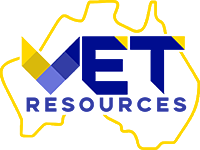Introduction
Australian Qualifications Framework (AQF) lies in the heart of Australia’s education system, a national treasure that sets the standard of education for all to follow. It is the backbone that supports the levels of education from the senior secondary certificate to the highest level of qualification. This national qualifications framework is not just a list; it is a promise of quality, a guarantee that whether you are in a technical and further education institute or a prestigious university, the higher education qualifications you earn are recognised and respected. It is a framework that speaks of expected learning outcomes and the volume of learning required to achieve them, ensuring every student’s journey through the Australian education system is one of growth and excellence.
The Australian Qualification Framework is a guiding light for registered training organisations and higher education providers, ensuring that a diploma qualification type in Victoria holds the same value as a bachelor pass degree in New South Wales. It is about fairness and consistency, about giving every learner a fair go. The framework ensures that recognition of prior learning is not just a phrase but a pathway to further success, allowing for the application of knowledge gained through experience to be valued just as much as formal study. It is a system that they Australian Government Department of Education, along with the Australian Skills Quality Authority and Tertiary Education Quality and Standards Agency, upholds with pride, making sure that education in Australia remains a beacon of high standards of education for the world to see.
What is the Australian Qualifications Framework (AQF)?
Purpose of the AQF:
- To unify and standardise qualifications from various educational sectors.
- To ensure national and international recognition of Australian qualifications.
- To provide clear educational pathways for students.
Components of the AQF:
- Levels: Ranging from Level 1 (Certificate I) to Level 10 (Doctoral Degree).
- Qualifications: Senior Secondary Certificate of Education, Diploma, Bachelor’s Degree, and more.
- Sectors: Covers schools, vocational education, and training (VET), and higher education.
AQF Levels and Qualifications Table:
| AQF Level | Qualification Type | Years of Study | Expected Learning Outcomes |
| 1 | Certificate I | 0.5 to 1 | Basic knowledge and skills |
| 2 | Certificate II | 0.5 to 1 | Operational knowledge |
| 3 | Certificate III | 1 to 2 | Theoretical knowledge |
| 4 | Certificate IV | 0.5 to 2 | Practical skills and knowledge |
| 5 | Diploma | 1 to 2 | Depth of knowledge |
| 6 | Advanced Diploma/Associate Degree | 1.5 to 2.5 | Analytical skills |
| 7 | Bachelor Degree | 3 to 4 | Broad and coherent knowledge and skills |
| 8 | Bachelor Honours Degree/Graduate Certificate/Graduate Diploma | 1 to 2 | Advanced knowledge and skills |
| 9 | Master’s Degree | 1 to 2 | High-level application of knowledge |
| 10 | Doctoral Degree | 3 to 4 | Specialized research skills |
Recognition and Quality Assurance:
- The Australian Skills Quality Authority endorses the Australian Qualification Framework.
- The Department of Education and TEQSA recognise qualifications.
- Ensures a consistent level of education and standard of education across Australia.
TEQSA’s Responsibilities Under the AQF

Role of TEQSA:
- Regulatory Oversight: Ensures that higher education providers meet the higher education standards framework.
- Quality Assurance: Maintains high standards of education across universities and other tertiary institutions.
- Compliance Monitoring: Regularly reviews providers to ensure adherence to the AQF framework.
TEQSA’s Key Functions:
- Registration of Providers: Accredits higher education institutions to offer AQF-qualified courses.
- Course Accreditation: Approves higher education courses to ensure they meet Australian Qualification Framework
- Performance Assessment: Evaluates the performance of institutions against expected learning outcomes.
TEQSA and AQF Alignment:
- National Standards: Aligns with the AQF to uphold a national qualifications framework.
- International Recognition: Ensures Australian qualifications are recognised globally, enhancing the international education sector.
- Continuous Improvement: Encourages ongoing professional development and advancement of learning within the education sector.
TEQSA’s Impact on Education:
- Assurance of Quality: Guarantees that the volume of learning and level of education meet the rigorous AQF criteria.
- Protection of Students: Safeguards student interests by monitoring the quality of higher education awards and diploma associate degree
- Promotion of Excellence: Drives institutions towards excellence in education and research, fostering a high-achievement culture.
Higher Education AQF Levels
Overview of AQF Levels in Higher Education:
- Scope: Encompasses levels 5-10 within the AQF, tailored to higher education qualifications.
- Progression: Facilitates a structured journey from diplomas to doctoral degrees.
AQF Levels Specific to Higher Education:
| AQF Level | Qualification Type | Description |
| 5 | Diploma | Prepares students for professional practice or further study. |
| 6 | Advanced Diploma/Associate Degree | Provides practical and theoretical knowledge for skilled work. |
| 7 | Bachelor Degree | Offers comprehensive academic education. |
| 8 | Bachelor Honours Degree/Graduate Certificate/Graduate Diploma | Enhances bachelor’s degree with advanced study or professional practice. |
| 9 | Master’s Degree | Specializes in advanced knowledge and research. |
| 10 | Doctoral Degree | Represents the pinnacle of academic achievement. |
Undergraduate Certificates:
- Introduction to Tertiary Education: Serves as a stepping stone into higher education.
- Focused Learning: Concentrates on specific skills and knowledge for employment or further study.
- Duration: Typically requires six months to one year of study.
Pathways to Further Education:

- Credit Transfers: Allows for recognition of prior learning and credits towards higher Australian Qualification Framework levels.
- Continued Learning: Encourages lifelong learning and ongoing professional development.
- Diverse Opportunities: Opens doors to a range of careers and advanced educational prospects.
AQF Levels and the School Sector
Integration with School Education:
- Foundation for Further Study: Establishes the groundwork for tertiary education pathways.
- Senior Secondary Certificate: Marks the completion of high school education, aligning with AQF Level 1.
Senior Secondary Certificate of Education:
- National Recognition: Ensures that high school qualifications are consistent across Australia.
- University Entrance: Often used for assessment for university entry, including calculating the Australian Tertiary Admission Rank (ATAR).
AQF Levels in Detail:
| AQF Level | School Sector Qualification | Typical Duration | Key Learning Outcomes |
| 1 | Certificate I | 0.5 to 1 year | Introductory skills and knowledge for work. |
| 2 | Certificate II | 1 to 2 years | Preparatory knowledge and skills for employment. |
| 3 | Certificate III | 2 years | Trade skills and vocational training for specific jobs. |
| 4 | Certificate IV | 2 years | Preparation for supervisory and management positions. |
Transition to VET and Higher Education:
- Vocational Pathways: School sector qualifications lead to VET options like Certificates I–IV.
- Academic Pathways: Prepares students for higher education qualifications such as diploma and bachelor degrees.
Quality and Standards in Schools:
- Curriculum Development: Ensures that school curricula meet the national standards of education.
- Assessment Standards: Aligns with AQF to maintain consistent assessment criteria across states and territories.
Qualification Issuing Agencies
Roles and Responsibilities:
- Accreditation: Agencies are tasked with accrediting courses to meet AQF standards.
- Quality Assurance: They monitor educational providers to maintain the high standards of education expected within the AQF.
- Certification: These bodies issue official certifications, such as the senior secondary certificate and diploma associate degree.
Key Issuing Agencies:
- Australian Skills Quality Authority (ASQA): Regulates courses and training providers in the VET sector.
- Tertiary Education Quality and Standards Agency (TEQSA): Oversees higher education providers, ensuring they comply with the higher education standards framework.
- State and Territory Accrediting Bodies: Each Australian state and territory has a body that accredits school-level qualifications, like the Victorian Certificate of Education and the Western Australian Certificate of Education.
Agency Functions in the AQF:
| Agency Type | Functions | AQF Levels Covered |
| National Regulatory Bodies | – Accreditation of VET and higher education providers
– Quality audits |
All levels |
| State/Territory Bodies | – Issuance of school certificates
– Local accreditation |
Levels 1-4 |
| Professional Accrediting Bodies | – Endorsement of professional qualifications
– Continuing professional development |
Levels 5-10 |
Ensuring Consistency and Quality:
- National Framework Alignment: Agencies work within the AQF to ensure national consistency across qualifications.
- International Recognition: They also play a role in the mutual recognition of Australian qualifications internationally, supporting the international qualification recognition
Pathways and Progression:
- Credit Transfer and RPL: Agencies facilitate recognising prior learning and credit transfers, aiding students in their educational progression.
- Support and Guidance: Provide resources and support for students navigating the AQF, such as the Australian Education International website.
AQF Objectives and Standards
Objectives of the AQF:
- Consistency: To ensure a consistent approach to the accreditation of qualifications across Australia.
- Quality: To maintain and enhance the quality of Australia’s education and training outcomes.
- Pathways: To provide clear and articulated educational pathways for learners.
AQF Standards 2016:
- Relevance: Standards are designed to keep Australian qualifications relevant to contemporary needs.
- Rigour: They enforce rigorous assessment strategies to validate the depth and application of knowledge.
- Recognition: Standards support recognising prior learning and facilitate mutual recognition of qualifications.
The AQF Framework Structure:
| Framework Component | Description |
| Levels Criteria | Defines the complexity, depth of learning, and autonomy required at each AQF level. |
| Qualification Type Descriptors | Provides a detailed description of the learning outcomes for each qualification type. |
| Responsibility for Accreditation | Outlines the roles of accrediting bodies at different levels of the AQF. |
AQF Levels and Learning Outcomes:
| AQF Level | Learning Outcome Focus |
| 1-4 | Practical skills and foundational knowledge. |
| 5-6 | Technical and further education with a blend of theory and practical application. |
| 7 | Broad and theoretical understanding with the bachelor’s degree as the baseline for higher education. |
| 8 | Advanced scholarship with a focus on research and professional practice. |
| 9-10 | Specialized research skills and leadership in knowledge application. |
Ensuring Educational Excellence:
- Benchmarking: The AQF serves as a benchmark for international education standards.
- Continuous Review: The framework is subject to ongoing review to ensure it meets the dynamic needs of the international education sector.
- Stakeholder Engagement: Regular consultation with education providers, industry, and the community to ensure the AQF meets diverse needs.
More Information on the AQF
Accessing AQF Information:
- Official AQF Website: The primary source for detailed information on the AQF.
- Education Provider Resources: Universities, TAFEs, and RTOs offer guidance on how their courses align with the AQF.
- Government Publications: The Department of Education provides documents and updates on the AQF.
Understanding AQF Levels:
- AQF Level Descriptors: Summaries that explain the outcomes expected at each level.
- Qualification Pathways: Charts and guides that illustrate progression options within the AQF.
Support for Students and Educators:
- VET Services: Organisations like VET Resources offer support in navigating the AQF.
- Recognition Services: Help with understanding how AQF qualifications are recognised domestically and internationally.
AQF and International Students:
- International Equivalency: Information on how AQF levels compare to international qualifications.
- Australian Education International Website: A resource for international students and education providers.
Continuous Development of the AQF:
- Review Processes: Regular assessments to ensure the AQF remains current and effective.
- Stakeholder Feedback: Opportunities for the community to contribute to the evolution of the AQF.
Contact and Support:
- Inquiries: Contact details for the AQF office for specific questions or clarifications.
- Feedback Mechanism: Channels for providing feedback on the AQF and its implementation.
Call to Action:
- Explore Your Options: Encouraging students to consider how AQF qualifications can shape their future.
- Engage with VET Resources: For personalised advice and support leveraging the AQF for educational and career advancement.
Frequently Asked Questions
Q1. What is a unit of competency, and how is it relevant to AQF qualifications?
- A unit of competency is an application of knowledge and skill to meet workplace standards. It is a key component of VET-accredited courses and is essential for assessing various AQF qualifications.
Q2. How do I obtain a statement of attainment?
- A statement of attainment is provided when an individual completes one or more units of competency from a nationally recognised VET qualification. This can be obtained from registered training organisations upon successful completion of the unit(s).
Q3. Are there VET-accredited courses available through community education centres?
- Yes, many community education centres offer a variety of VET-accredited courses. These centres provide accessible education options, often focusing on the needs of local communities, including those in the Australian Capital Territory.
Q4. Can I have my overseas qualifications assessed in Australia?
- Yes, the assessment of overseas qualifications can be done through bodies like the Australian Skills Quality Authority (ASQA) to determine the Australian equivalency of your international qualifications.
Q5. What are Victorian purchasing guides, and how do they relate to the AQF?
- Victorian purchasing guides provide information on the materials and services that can be funded within the VET sector, including details on units of competency and qualifications within the AQF.
Q6. How do Australian high schools ensure that they meet AQF standards?
- Australian high schools follow a curriculum that aligns with AQF standards, ensuring that the Senior Secondary Certificate of Education they offer meets national criteria. This includes incorporating the wisdom of our elders in some curricula to ensure a comprehensive educational experience.
Q7. What is the number of regulations that govern the AQF?
- The AQF is governed by a number of regulations that ensure quality and consistency across all qualifications. These regulations are set by national and state accrediting bodies and are informed by a range of sources, including industry feedback and academic review of the literature.
Q8. Can I study a piece of scholarship at the University of Wollongong under the AQF?
- Yes, the University of Wollongong offers a range of courses and pieces of scholarship recognised under the AQF. Students have the option to select from a list of electives to tailor their study to their interests and career goals.
Q9. How does federal government policy influence the AQF?
- Federal government policy plays a significant role in shaping the AQF. Policies determine the structure, governance, and strategic direction of the AQF, ensuring that it aligns with national educational goals and industry needs.
Q10. What AQF level is a Diploma of Agriculture, and what age group is it suitable for?
- A Diploma of Agriculture is typically an AQF Level 5 qualification. It is suitable for individuals aged 16 to 18 and above, particularly those interested in pursuing a career in the agricultural sector or furthering their education in an agricultural science degree.
Disclaimer:
The information presented on the VET Resources blog is for general guidance only. While we strive for accuracy, we cannot guarantee the completeness or timeliness of the information. VET Resources is not responsible for any errors or omissions, or for the results obtained from the use of this information. Always consult a professional for advice tailored to your circumstances.







